Enter our photo competition HERE Get involved
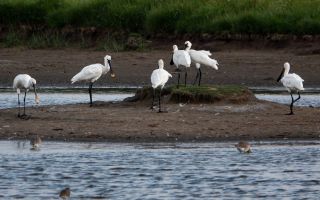
Why we need abundant nature in Morecambe Bay
Sarah, our CEO, reflects on the notion of 'adundance' in nature and new species making the Bay their home.
Forty-plus years ago, when my love of nature began, I would go to my local patch of coastline & delight in the various wading & shore birds there, some feeding up before, after and during their long migratory journeys, along with resident species present all year round.
Lapwing were, and still are my favourite. Also known as Green Plover or Peewit, due to their wonderful, haunting call, these birds were abundant on the grazing marshes & ploughed fields in the 1980’s. Similarly, in Summer, I would also visit a disused railway line full of short grasses & rampant buddleia. This forgotten patch of ground was teaming with life & particularly with multiple species of butterfly filling the skies. I remember very clearly Marbled White, a distinctive, quite large, black, and white butterfly, unlikely to be mistaken for any other species. I don’t think I am exaggerating when I say there were clouds of them, literally hundreds gliding around my head, dancing with other species such as Red Admiral, Comma & Painted Lady. Getting such enjoyment from seeing flocks of enigmatic Lapwing & clouds of Marbled White made me determined to make sure that they were around for future generations to see. And so, my desire to train and work in nature conservation began.
I did not foresee the changes which were coming – who could at such a young age? But it is now utterly clear to all that want to see, that our natural world is struggling in the face of so many challenges. Whilst we can still see Lapwing, we might see 10 to 20 at most, not the 100’s of my childhood. No longer do we see clouds of butterflies hanging off buddleia bushes or in meadows in summer. Yes, we still see butterflies, but the abundance of nature has gone…
Many of us are seriously worried about the situation; we know what we have lost. But what about younger people who have never experienced the abundant nature of 40-plus years ago? How can we care about bringing something back which we have never seen, in a world which is so geared towards the personal and the present? Shifting Baseline Syndrome is the “gradual change in the accepted norms for the condition of the natural environment due to a lack of experience, memory or knowledge of its past condition”. Current generations cannot perceive how much their environment has changed because they are comparing it to their own normal baseline and not to historical ones. I am sure I am a culprit too. The clouds of birds and butterflies I saw in my childhood, won’t be a patch on those seen by my ancestors in the 1800’s, I am very sure of that. Is it any wonder then, that species declines have happened, almost unchecked, despite folk like me trying their best to prevent it?
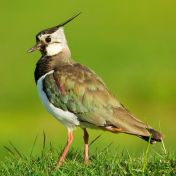
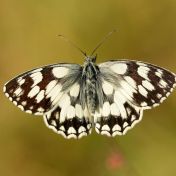
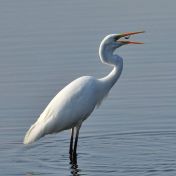
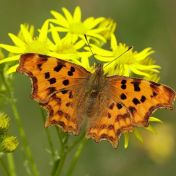
I try to be positive though, and there are some species which we see now, which I could only dream of seeing by taking a foreign holiday, back in the 1980’s. Sadly this is largely due the effects of human-induced climate change, but that conversation is for another day! Back to the positives…I now regularly see Great White Egret, tens of Little Egret, and this year a Spoonbill or two, as I travel along the Furness Line between Grange and Lancaster! In the 1980’s, Little & Great White Egret were rare migrant birds, but Little Egret have been breeding in southern Britain since 1996. Spoonbills are incredible, and if you haven’t seen one, I recommend you try (4 birds were at Leighton Moss this summer). These tall, white, wading birds have a spatula shaped, long black bill, which has a yellow tip in the breeding season. To feed, they sweep their bills from side to side in an elegant fashion, and in flight, their legs and neck are outstretched making them quite unmistakable.
Here at Morecambe Bay Partnership our vision is for nature to be more abundant & we are striving to raise awareness and funds to help future generations understand & enjoy the delights of a thriving natural world. Nature for nature's sake, and people benefit too.
Images: Main image: Spoonbills by Jarrod Sneyd. Gallery of four images from left to right; Lapwing by Mark Hamblin; Marbled White butterfly by Iain Leach; Great White Egret by Martin Kuchczynski, and Comma butterfly by Iain Leach.
